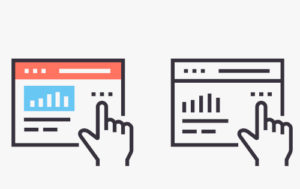A new Open Education Resources (OER) initiative from the nonprofit Teach Access aims to expand awareness of digital accessibility in higher education. Teach Access works with education, industry, and disability advocacy organizations to enhance students’ understanding of digital accessibility as they learn to design, develop, and build new technologies–has launched a
Built in collaboration with instructional design firm iDesign, the organization has launched Teach Access Curriculum Repository, which brings together more than 250 teaching resources to support teaching accessibility across a wide range of computer science, technology, and design programs.
“At a time when technology touches nearly every facet of our daily life and experiences, digital accessibility and inclusion is an education, civil rights, and an economic imperative,” said Kate Sonka, Executive Director of Teach Access. “This is about not just teaching students about the importance of accessibility–but equipping those future graduates to put the principles of accessibility and inclusion into practice as they look for internships and jobs.”
According to the CDC, 61 million adults–or roughly one in four adults–in the United States report living with a disability. However, despite increased demand for technologies that are adaptive to the needs of disabled people, most of the programs that educate future computer scientists, software engineers and product developers do not consistently teach students how to ensure that the products they create are accessible. One 2018 study found that only 50 percent of computer science and engineering programs at traditional universities in the United States had at least one professor teaching accessibility.
To help close this accessible technology skills gap, Teach Access leverages partnerships with faculty and higher education programs, including traditional colleges and universities to deliver high-quality and turnkey accessibility learning materials. Equipped with materials, resources, and a network of peers, the program provides faculty with the support to build accessibility concepts into courses and teach practical applications of accessibility to learners in their classrooms.
This OER solution includes accessibility teaching resources in a wide range of courses, including Human Computer Interaction, Computer Science, Web Design & Development, UX Design, Visual & Graphic Design, Instructional Technology, Game & Interactive Media Design, Robotics, Technical Writing, and Psychology.
To refine, organize, and host the collection of accessibility-focused teaching resources, Teach Access selected instructional design firmiDesign, which has worked with more than 100 institutions to design, build and support award-winning online courses. Through a meticulous curriculum-mapping process, instructional design experts from iDesign collaborated with faculty experts on digital accessibility and inclusion to review hundreds of faculty-submitted teaching resources and learning objects—now available in a central collection of OER.
The first year of this collaboration between Teach Access and iDesign included a series of meetings with a diverse group of experts in faculty development and instructional design across a variety of institution types. This team helped inform the creation of a roadmap for future professional development and developed an outreach strategy for sharing the accessibility teaching resources. With the first phase of the project and launch now complete, Teach Access recently secured additional grant funding from Verizon as part of their commitment to the Valuable 500. With Verizon’s support, Teach Access will continue its work to ensure a future where technology is born accessible and inclusive for all.
“Accessibility can’t be an afterthought. It needs to be woven throughout the very design and engineering processes used to create and build technology in the first place,” said Whitney Kilgore, PhD, co-founder and chief academic officer of iDesign, “This is about ensuring that the next generation of developers, designers and engineers are equipped to create technology that is responsive to the needs of every individual.”
This press release originally appeared online.
- An overwhelming majority of organizations paid ransomware last year - May 9, 2024
- 5 trends impacting higher ed’s path in 2024 - May 8, 2024
- Are AI skills more important than degrees? - May 2, 2024

